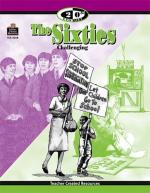|
This section contains 363 words (approx. 2 pages at 300 words per page) |

|
The Search for a Laser.
Once Charles H. Townes developed the maser in the 1950s, the search was on for a similar instrument that used light. Lasers and masers work on the same principle. A core of atoms are excited to a high energy state. They return to their normal energy state by releasing energy at a single, "coherent" frequency. In masers this is microwave or radio energy; in lasers it is light energy.
The First Laser.
In 1960 Theodore.H. Maiman at the Hughes Research Laboratory used a synthetic ruby to produce the first laser. A ruby is composed of crystals of aluminum oxide with a trace of chromium, which provides its color. The ruby allows the atoms to be excited long enough to accumulate and emit their energy packets all at once. Amplifying the light effectively is an engineering problem. While various atoms...
|
This section contains 363 words (approx. 2 pages at 300 words per page) |

|




